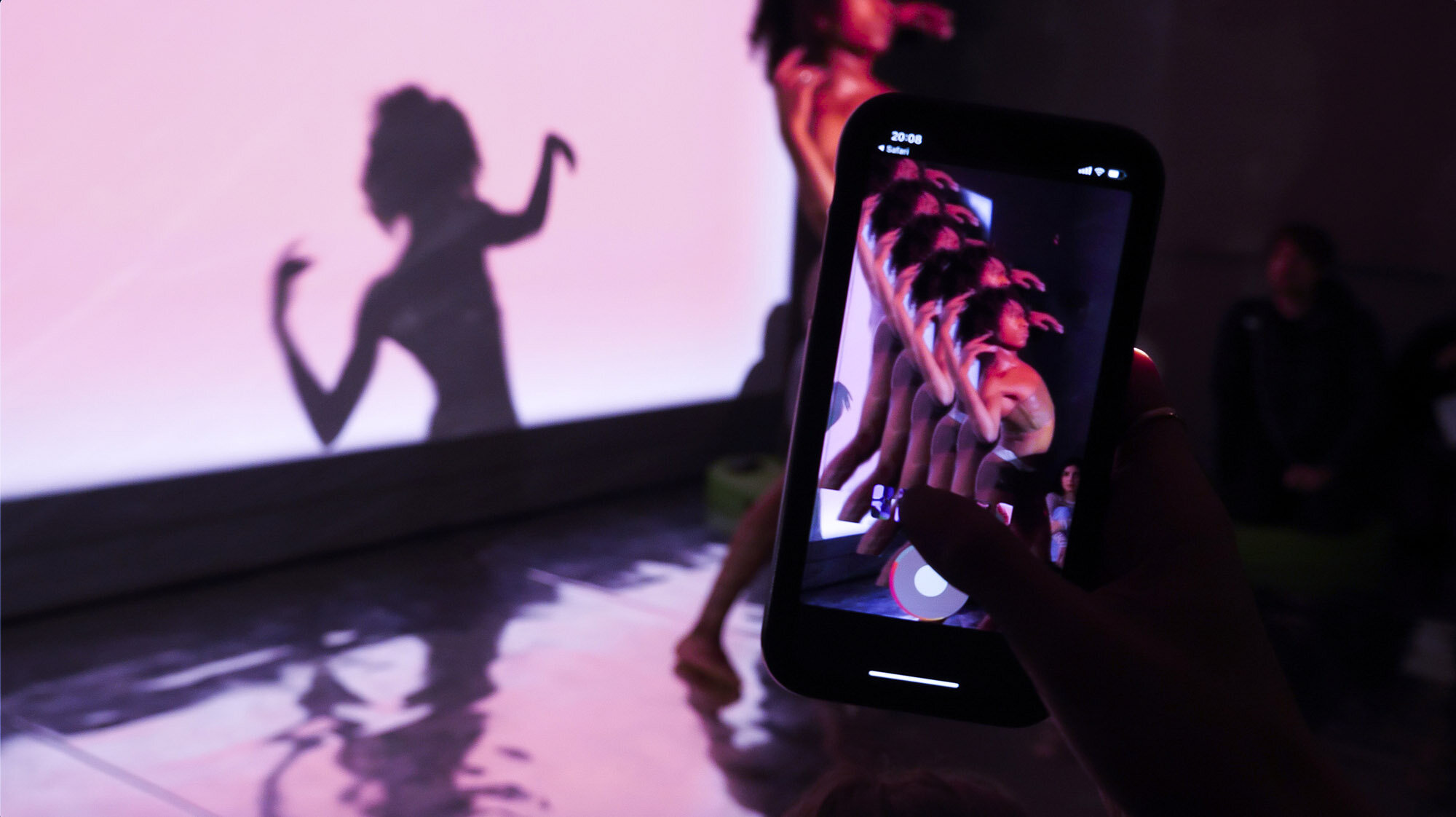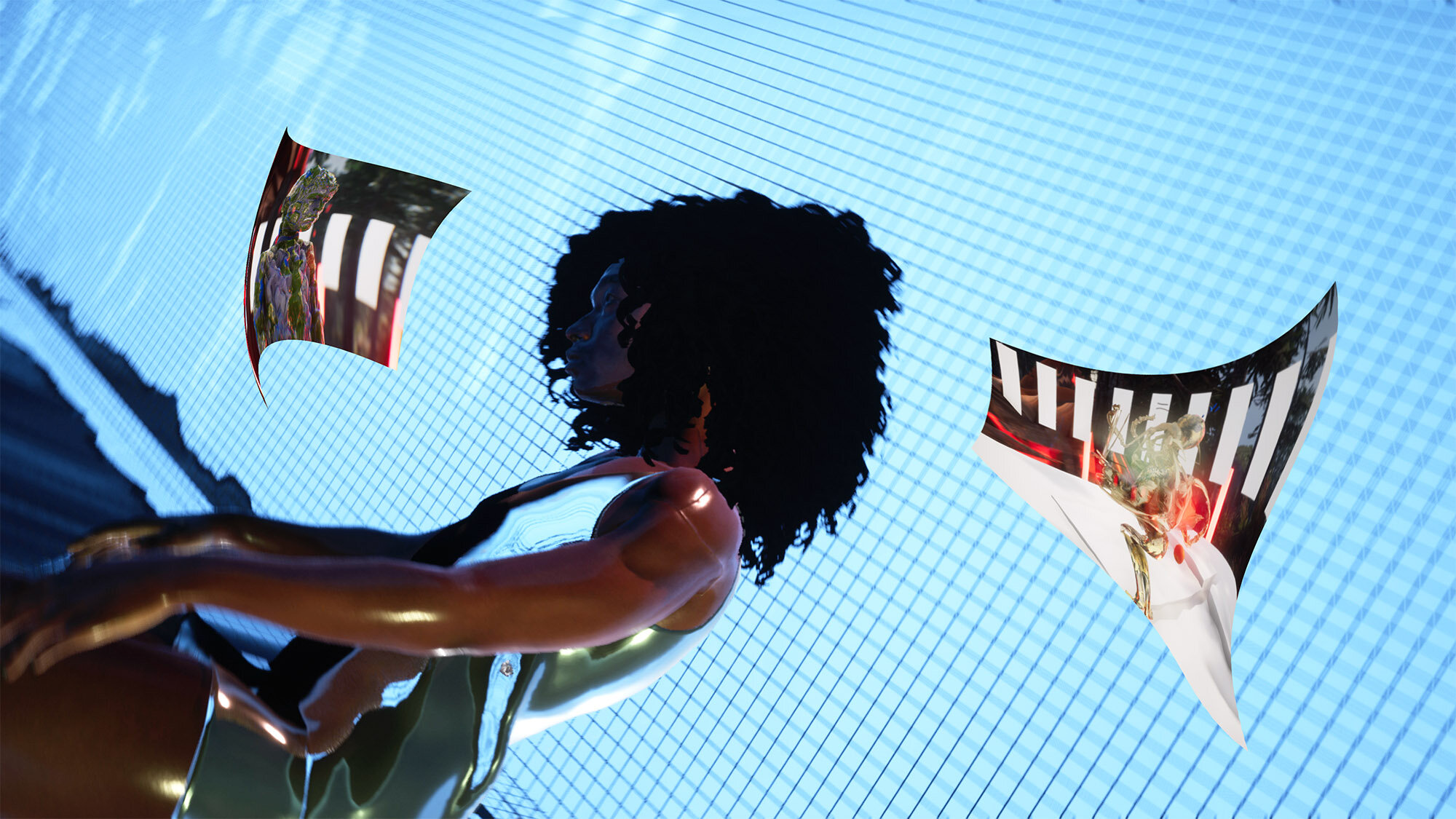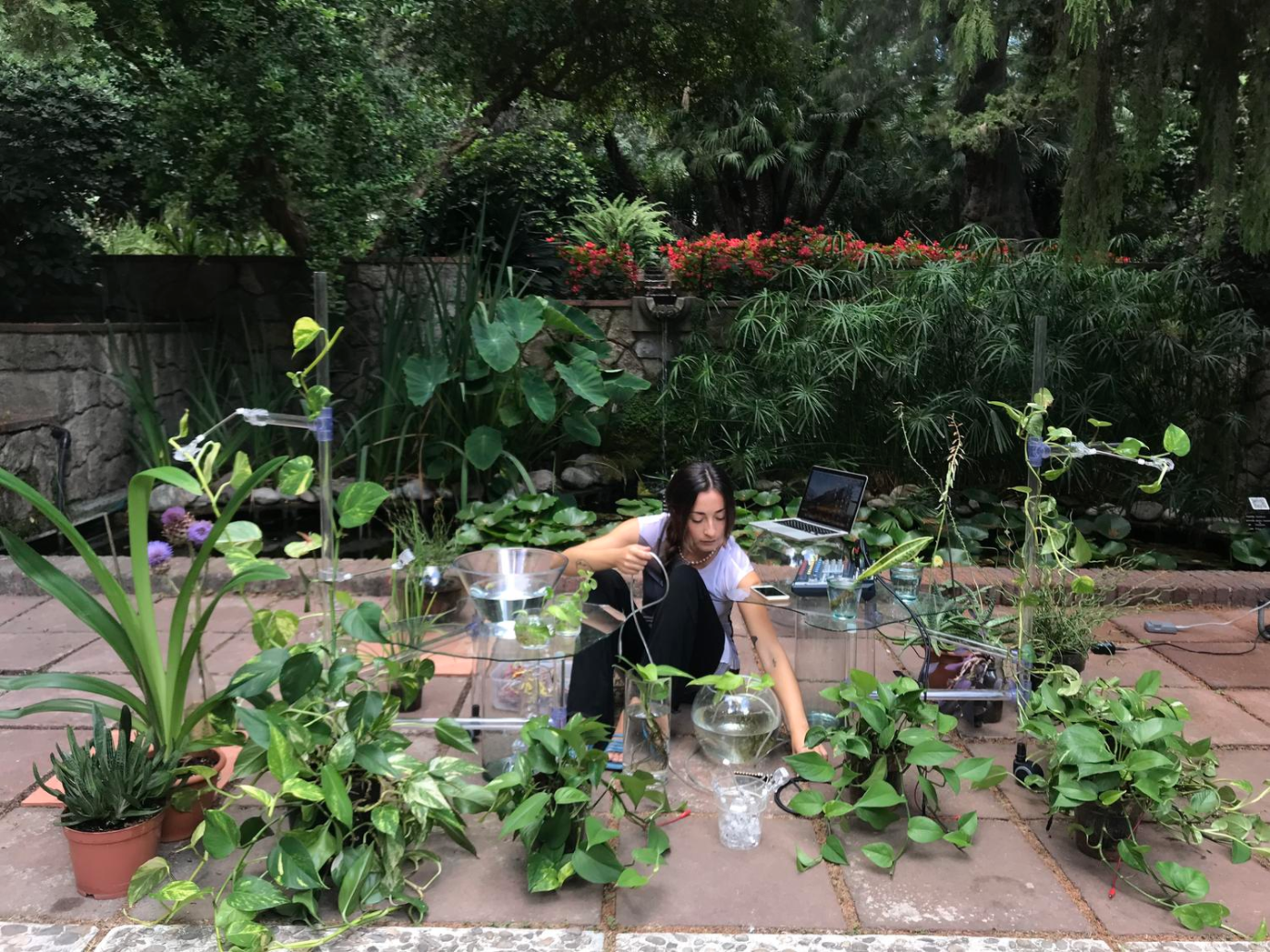Keiken: Deconstructing the Now
Keiken is a cross-dimensional collaborative practice founded by artists Hana Omori, Isabel Ramos, Tanya Cruz, in 2015. Through a veil of magical realism, they reflect and deconstruct the contemporary, as though it was history.
Working in a non-hierarchical way, and often including collaborators outside of the collective, Keiken is a great example of the beauty of art collaborations.
Their work ‘Feel My Metaverse,’ was part of the exhibition How to Make a Paradise at Frankfurter Kunstverein (until August 16, 2020). You can watch Keiken talk about the project and this exhibition on our IGTV.
Keiken + George Jasper Stone, Feel My Metaverse, 2019 – install view
Frankfurter Kunstverein©. Originally created for Jerwood Collaborate!, supported by Jerwood Arts and Arts Council England.
Photo: Norbert Miguletz
How did you start Keiken?
We started Keiken when we were in Uni together. We didn’t really know what we wanted to do – just that we wanted to collaborate. Our individual practices were very different, but we had mutual interests and respect for each other’s work.
One day we sat in Izzy’s room, this surreal room with pink flamingos everywhere, and made a glorious mind map to figure out what combines all our practices. We came to the conclusion that all our work centers around experience. Whether that means we want to push the boundaries of experiencing art itself or experience on the level of consciousness.
‘Keiken’ means experience in Japanese; the name has been a very good anchoring point for our collaboration when we weren’t sure where we were going with it.
Keiken + George Jasper Stone, Feel My Metaverse (Trailer), 2019 – Originally created for Jerwood Collaborate, supported by Jerwood Arts and Arts Council England. Sound by Khidja.
How was it combining your separate visions and practices?
In the beginning, we pulled together our dissertations and read through them and started drawing these connections between each other’s research. At that stage, it was almost like all of our research became each other’s research.
But it’s taken many years to be able to combine our practices. It’s in the last year and a half that we started to fully merge it in a way that felt like we were projecting what we were thinking or internalizing.
When we graduated, we knew the direction we wanted to go, but we hadn’t learned the digital skills to do that, so we had to build that knowledge. We’ve spent a lot of time recognizing what we all enjoy individually about creating and then facilitating that within the group.
Left Image: Sakeema Crook + Keiken, Mind, Body and Screen 2019 – Created for Jerwood Collaborate!, supported by Jerwood Arts and Arts Council England. Solo dance by Sakeema.
Right Image: Keiken + George Jasper Stone, Feel My Metaverse, ‘Pando’ played by Sakeema Crook 2019 – Created for Jerwood Collaborate!, supported by Jerwood Arts and Arts Council England.
Do you feel like you now have found a collaborative voice and point of view?
We are at a point where our work is expressing what we are saying amongst one another and formulating the vision of our world. But it’s an ongoing and adapting process. There’s no endpoint, it’s a continuation of learning, and often learning through mistakes. It’s ever-evolving, and we want it to be very fluid and adaptable.
How do you define this point of view?
We often say that we “Reflect on the contemporary as though the now is history.” That means looking at current issues, whether they are political or economic, has to do with climate change, etcetera, and dissecting them and creating this bird’s eye perspective where we reconstruct and build speculative narratives around them.
Keiken + George Jasper Stone, Feel My Metaverse, 2019 – Created for Jerwood Collaborate!, supported by Jerwood Arts and Arts Council England.
You work a lot with other artists, how do you find the collaborators and what draws you to a certain collaboration?
It just naturally happens – it’s a quite organic process. We’ve been introduced to people along the way and had strong connections with them. Often, we’ve connected with people online as well, and that’s equally felt very organic.
It’s always been a space where we’ve tried to work with new kinds of people all the time, whether that’s developers or people from different places, etcetera. We work in a diverse and intersectional way. It’s not limited to location, background or by perspective too much, or by skills.
What benefits do you see in collaborating?
Adrienne Maree Brown talks about the intersectionality of analysis, which really resonates. That the more you can co-create, the better it becomes because there is more capacity of oppression, advantages, and perspectives. Collaborating is the progressive way of working, allowing you to be as intersectional as possible. That’s what she’s saying.
On a basic level, we find so much joy in collaborating, and we’ve been working together longer than we ever worked individually – so it also feels very natural to us. We challenge each other, exchange skills, and share success. Together, you become so much stronger than you are alone.
Sakeema Crook + Keiken, Mind, Body and Screen 2019 – Created for Jerwood Collaborate!, supported
by Jerwood Arts and Arts Council England. Solo dance by Sakeema.
What does your creative process look like?
We are very idea and concept based, and spend a long time reflecting, doing research, and thinking of the concept and its relevance. What topics do we feel are relevant to the contemporary moment and people’s current emotions.
The medium is informed by its relevance in the now or what message we think is important right now. Say, for example, we have some VR projects we want to do in our pocket, but we’re not going to take them out right now because of Covid-19 – as VR is less accessible for the majority now.
Keiken + George Jasper Stone, Feel My Metaverse, 2019 – Created for Jerwood Collaborate!, supported by Jerwood Arts and Arts Council England.
What topics are you interested in right now?
All of our projects evolve from the previous one; there is a thread throughout all of the works. At the moment, we’re exploring this idea of the metaport, which will take form as this future airport, connecting to our film ‘Feel My Metaverse,’ created with George Jasper Stone.
For this project, we’re working with a new collaborator: CGI artist Ryan Vautier. We’re currently establishing the foundation of the project with him. The idea has been bubbling to the surface since the lockdown. As a society, we’re in this liminal, transitional space, and an airport, or the idea of the metaport, is a good symbology of this.
We’re going to use a gaming engine to create the airport and become the architects of a megaproject. Megaprojects, normally cost $1 billion or more and are always built with capitalist intent. This will allow us to virtually realize a superstructure, enabling us to tackle and deconstruct the imposing impacts of Covid-19. We’re also exploring how an airport is a place for hyper-capitalism and hyper surveillance capitalism.
Keiken + George Jasper Stone, Screening Inside You, 2019 – Created for Jerwood Collaborate!, supported by Jerwood Arts and Arts Council England. Photo: Hydar Dewachi
What tips would you give to artists who would like to form a collective, or start working together?
Know your own practice first. Not knowing your roots can make you insecure within the collaboration.
Feel ready to collaborate; you need to be able to give to other people when you are collaborating and make sure that the work is based on a mutual agreement.
Be open to feedback and listen to criticism. You need to accept to have your thoughts challenged.
Get over yourself; it doesn’t matter if you are wrong, or if you didn’t get it this time. You will make mistakes, but you must realize that those mistakes don’t matter in the big scheme of things.
Nurture each other! It’s a very long process to learn how to collaborate. In our practice, we spend as much time nurturing one another as we do making the art itself.
See more of Keiken’s work
ArtConnect | Instagram
Discover Contemporary Art
ArtConnect is the leading destination to discover emerging contemporary artists worldwide.
More interviews on ArtConnect you might like

















